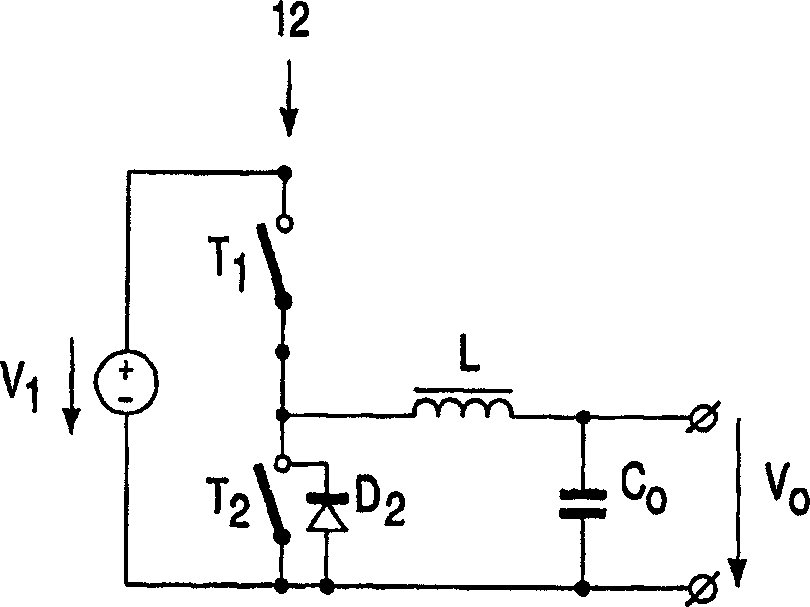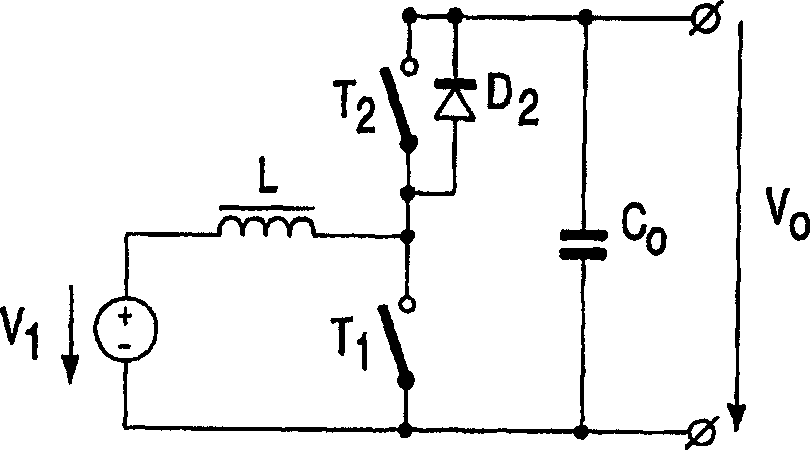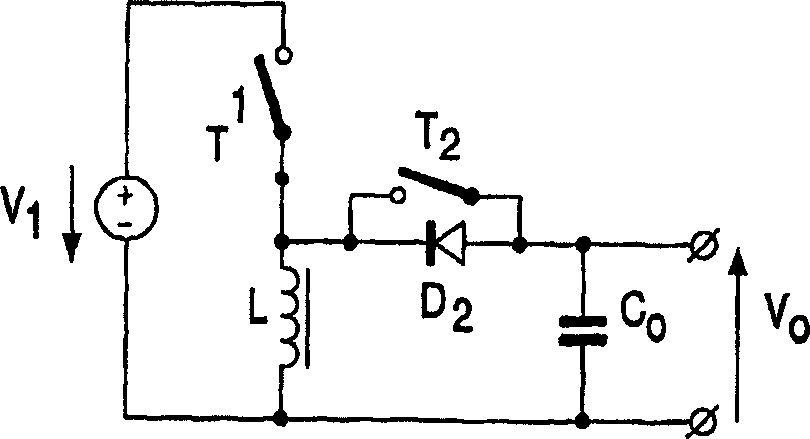Converter circuit and control method for same
A converter circuit and control device technology, applied in control/regulation systems, output power conversion devices, instruments, etc., to achieve the effect of reducing switching losses
- Summary
- Abstract
- Description
- Claims
- Application Information
AI Technical Summary
Problems solved by technology
Method used
Image
Examples
Embodiment Construction
[0038] Figures 1a-1d shows a converter circuit according to a known layout: a buck converter ( Figure 1a ), boost converter ( Figure 1b ), buck-boost converter ( Figure 1c ) and the up-down converter ( Figure 1d ). Each converter circuit 10 takes the input voltage V i Converts the output voltage to the output V o . Each converter circuit 10 includes a first switching element T 1 , the second switching element T 2 and inductive element L. Freewheeling diode D 2 It is part of the freewheeling path for the current passing through the inductance element L. exist Figures 1a-1d In and freewheeling diode D 2 parallel arrangement of the second switching element T 2 as synchronous rectifiers, i.e. they are connected with D 2 synchronization, whereby in order to avoid losses due to large forward voltages, if there is no T 2 case diode D 2 If they are turned on, they are also turned on. .
[0039] In fact, the ideal representation is Figures 1a-1d T of the switch...
PUM
 Login to View More
Login to View More Abstract
Description
Claims
Application Information
 Login to View More
Login to View More - Generate Ideas
- Intellectual Property
- Life Sciences
- Materials
- Tech Scout
- Unparalleled Data Quality
- Higher Quality Content
- 60% Fewer Hallucinations
Browse by: Latest US Patents, China's latest patents, Technical Efficacy Thesaurus, Application Domain, Technology Topic, Popular Technical Reports.
© 2025 PatSnap. All rights reserved.Legal|Privacy policy|Modern Slavery Act Transparency Statement|Sitemap|About US| Contact US: help@patsnap.com



